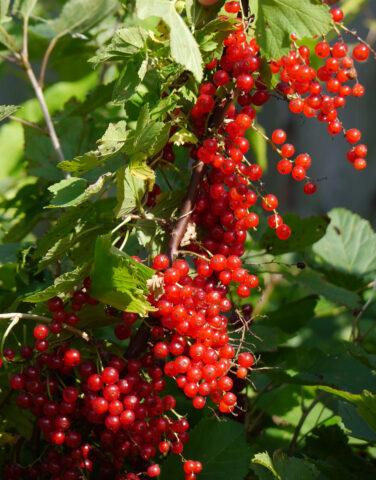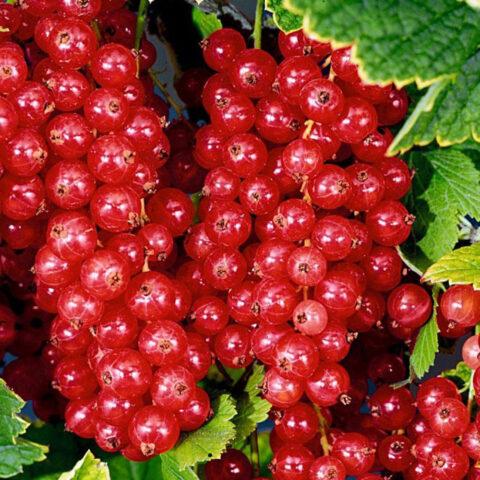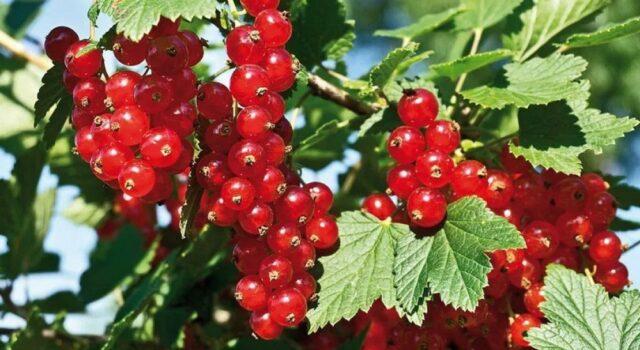Content
Dream currant is a domestic variety with a good harvest of red berries, bred several decades ago. It tolerates frost and drought well, is unpretentious in care, and is immune to some diseases. Nursing culture needs a standard, but comprehensive one.
Breeding history
The Dream red currant was bred by the specialists of the South Ural Research Institute of Horticulture and Potato Growing. The authors are A.P. Gubenko and V.S.Ilyin. The new species was obtained thanks to free pollination of the Chulkovskaya variety, which has been known in many Russian regions since the middle of the last century.
Description of the red currant variety Dream
State tests of the Dream red currant began in 1980. In 1987 it was included in the State Register. This variety is recommended for cultivation in the Volgo-Vyatka and Ural regions.
Before buying and planting, it is important to study the description of the Dream red currant variety with photos and reviews. The culture forms vigorous and dense, but slightly spreading bushes. They reach a height of 0.8-1.2 m. During growth, the shoots are small and green in color. The kidneys are single, medium in size. Their shape is elongated-ovate, the apex is pointed, pubescence is weak. There is a slight deviation from the escape.
The Dream currant has three-lobed medium-sized leaves. They have a green color and a matte wrinkled surface. The plates have medium density, the shape is straight or slightly curved. The blades are pointed, the lateral blades are narrower and slightly shallower, widely spaced. The bases of the leaves can be straight or with shallow grooves. Sharp denticles along the edges. The cuttings have medium thickness and length, slight drooping, green coloration and anthocyanin bloom at the base.
Red currant flowers Medium-sized dream. They have a saucer shape and a noticeable ridge. Sepals adjoining each other are slightly bent back. They have a light yellow color and a faint pink bloom.
The color of the buds of this variety is yellow-green, the brush is drooping. The flowers are bell-shaped, pink-gray.
The Dream currant has hanging brushes. They have an average density, length 6-7 cm. Sinuous green axes, there is pubescence. Petioles are thin, green in color.
This variety has one-dimensional berries. Their main characteristics are as follows:
- round shape;
- the color is bright garnet, after full ripening it is dark red;
- glossy shine;
- Medium to large size;
- weight on average 0.5-1.1 g;
- stalks are thin, average length;
- cups are small and closed, rounded;
- the skin is dense, but thin;
- the seed content is average.
The purpose of the fruit is universal. They can be eaten fresh or used for freezing and processing - making desserts, drinks, preservation for the winter.
100 g of Dream red currant berries contain more than 48 mg of ascorbic acid. Titratable acidity 3.5%.
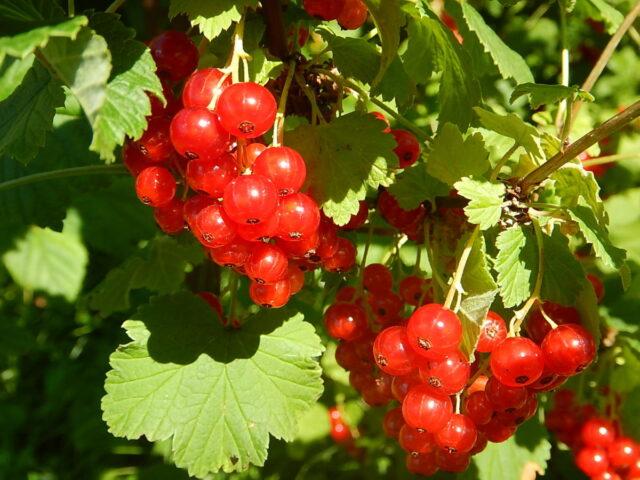
Dream red currant berries ripen together
Characteristics
Dream currant is suitable for growing in an urban environment. This variety is resistant to dust, gas pollution, smoke.
Drought tolerance, winter hardiness
In terms of frost resistance, the Dream red currant belongs to the fourth zone. The variety can withstand temperatures as low as -29-31.7 ° C. The maximum frost resistance is observed at the beginning of winter; by spring it decreases. If the winter is harsh and contrasting, then the flower buds may freeze.
Pollination, flowering period and ripening times
Red currant Dream has good self-fertility. She does not need pollinators.
Flowering begins in May.
The ripening time for this variety is average. The crop can be harvested from mid-July.
Productivity and fruiting, keeping quality of berries
The yield of the Dream red currant is 2.5-7 kg per bush. On an industrial scale, 8 tons are harvested per hectare. This is a long-term indicator. Due to the dense skin, the fruits have good transportability and keeping quality.
Taste qualities
Red currant Dream has a sweet and sour taste. It is estimated at 4.0 points. The fruits of this variety are versatile, but are recommended mainly for processing. In this case, the tasting score rises to 4.5 points.
Disease and pest resistance
Dream currant is resistant to powdery mildew. Immunity to anthracnose is weak.
Advantages and disadvantages
Red currant Dream has a dry separation - the berries are removed together with the stalk. The harvested crop retains its fresh appearance for a long time.
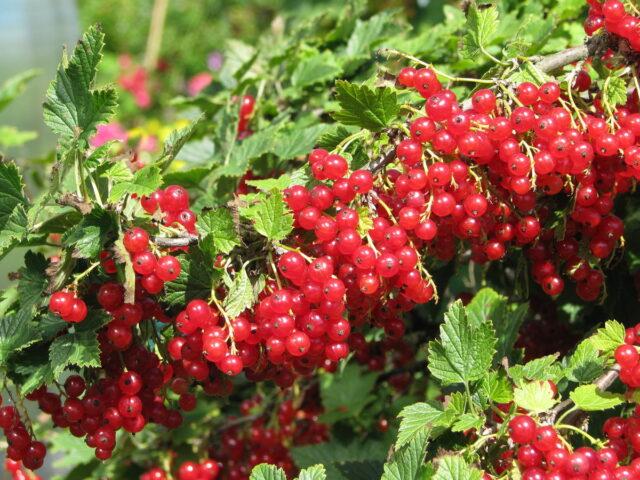
The dream is drought-resistant, but the lack of moisture during fruiting is fraught with crushing and shedding of berries.
Pros:
- unpretentiousness to the composition of the soil, in care;
- good productivity;
- resistance to frost, drought;
- immunity to powdery mildew;
- good indicators of transportability, keeping quality;
- versatility of the use of fruits.
Minuses:
- susceptibility to anthracnose.
Features of planting and care
Red currant Dream feels better on sandy loam, loamy soils, black soil, podzolic soil with a neutral reaction or weak acidity. The site should be well lit, although this variety can withstand some shading.
It is better to plant a crop with 2-3-year-old seedlings. Choose healthy specimens with a well-developed root system. The absence of mechanical damage, rot and other signs of disease is important.
It is better to plant dream currants in September. The plant manages to take root before winter. The works can be carried out in the spring - in the second half of April.
Before planting the Dream currant, you need to prepare a hole in a few weeks. Deepen by 0.4 m, diameter 0.5-0.6 m. If planting is planned for the fall, add humus or peat with wood ash. In the spring, only organic matter is needed. The further algorithm is as follows:
- Remove all leaves from the seedling.
- Dip the roots in water for 2-3 hours.
- Place the seedling in the planting hole.
- Spread the roots.
- Fill the hole with soil mixture, deepening the root collar by 5-6 cm.
- Compact the earth.
- Make a circular furrow 20 cm from the seedling. Spill it with water in several steps.
- Mulch the trunk circle. You can use peat, humus.
After planting, the seedling must be cut to 10-15 cm so that 2-3 buds remain. This stimulates the development and strengthening of the root system, the formation of new branches.
Dream currant bushes should be planted at intervals of 1.5. The same distance should be to the fence and other buildings.
Currant care Dream consists of the following activities:
- Regular watering. Before the seedling takes root, at least twice a week, then every seven days. If autumn is dry, then pre-winter watering is needed.
- Weeding every 2-3 weeks.
- Loosening and mulching of the trunk circle.
- Top dressing. In April, urea, in June and autumn, organic matter and micronutrient fertilizers
- Sanitary pruning and shaping in early spring.
- Autumn pruning after leaf fall.
The Dream currant has a weak resistance to anthracnose, therefore its prevention is important:
- cleaning and burning of fallen leaves and other plant residues;
- sanitary digging of soil in spring and autumn;
- regular weeding and thinning of plantings;
- fungicide treatment;
- removal of diseased and old branches.

Anthracnose manifests itself as brown and brown spots, begins with the lower leaves
For the treatment of anthracnose, Bordeaux liquid, copper sulfate, Gamair, Fitosporin, Ridomil Gold, Fundazol, Previkur are needed.
For the prevention of pests, it is recommended to treat the Dream currant with insecticides - Aktellik, Rovikurt, Karbofos during the formation of buds. Repeat the procedure after harvesting.
Conclusion
Currant Dream is one of the varieties of domestic selection, included in the State Register. Its red, rounded fruit can be eaten fresh or processed. The variety is resistant to frost, drought, powdery mildew. It is unpretentious in leaving, you need a standard set of measures.
Reviews with a photo about the variety of red currant Dream
